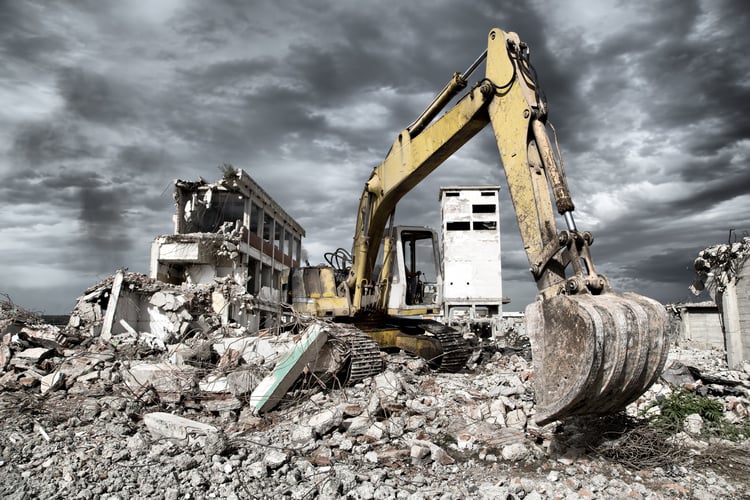A natural disaster can arrive at your doorstep at any time in a number of ways: an earthquake can shake your home’s very foundation, a power line can spark a fire that burns down your home, an old tree may fall on your roof after a very windy rainstorm. These events are unpredictable and the road to recovery will start with your homeowner’s insurance policy. The language will ultimately determine your path forward.

1. Defining the Path Forward
At this stage, you probably have a clear sense on your homeowner’s policy. If your looking to rebuild, the language should cover construction of the home to its original condition. If you are entertaining the idea of expanding your home, the insurance policy will not cover the cost of the addition. Ultimately, you will need to decide whether you will be best served rebuilding the original structure or taking your insurance funds and applying them towards a larger home elsewhere.
2. Navigating the Rebuild Estimate Process
Competing estimates for repairs. If rebuild estimates do not line up, the contractor will work on a compromise with the insurance adjuster. An independent appraiser and mediator can be appointed to break an impasse. If you find you are experiencing these events, you find that there will be delays in the project schedule and more often than not delay the progress. It is important to monitor this process closely to keep disputes from escalating and act with caution from the very start until you receive the insurance check. It is a wise practice to document your conversations and keep copies of correspondence and receipts. If you run into conflict with your claims department, you always have the option to contact the public relations department. If there are enough obstacles, you may need to engage a lawyer.
3. Let Us Not Forget Your Lender
While your insurance may agree to pay for the rebuild, you may not see the funds instantaneously. If you are still paying a mortgage, checks for rebuilding will mostly likely be made out to you and your lender. Your bank may elect to hold onto the money, dispensing it as the work is performed, adding yet another layer of administration and, therefore, delay.
4. Engage a Trusted Builder Who Can Ease the Estimate Pain
Let’s face it. You need resources who can be your advocate through this difficult time. Hiring a builder, subcontractors and repair people is not always the easiest task. Particularly, in a location where there is a high demand for these resources. It is important to take the time to take the following steps:
- Do your research. Try to find reputable resources that have been in business for at least five years and well-acquainted with your community’s planning department.
- Check references from previous home projects. A reputable builder will provide references. It is important to find resources that has the qualifications to effectively build your home to specification.
- Make sure they have the proper insurance and licensing. The contractor should have general liability insurance and worker’s compensation. They should also be a licensed contractor. You can confirm a contractor is licensed by accessing the California State Contractor's Licensing Board at https://www2.cslb.ca.gov/
OnlineServices/CheckLicenseII/ checklicense.aspx - Obtain a project estimate. Always request a detailed, itemized project estimate so that nothing is left up to interpretation.
- Obtain a project schedule. A project estimate and project schedule go hand in hand. It is important to get an idea as to when the project will start and when it will be completed based upon the size and scope of the project.
- Beware of change orders. It is important to make sure that be conscious of changing your mind on a building product. While it may be of the same quality, the cost for install may increase. Additionally, if there is an upgrade, this needs to be documented. It is also important to ask if the change will equate to an adjustment in the project schedule. Also, realize your warranty may be impacted.
- Obtain a well-defined contract. It is important your contract specifically describes how work will be performed, and expenses and services will be billed. Make sure to draft a payment schedule within the contract. Make an agreement for the amount and number of payments.
5. Returning Back to Normal
It is natural to grieve after a loss. It's important to be able to talk about it and, when you’re ready, start making progress towards recovery. At this stage, you’ve probably figured out how to get your family back into a regular day-to-day schedule. It's time to evaluate the steps for effectively recovering your losses. Whether you are navigating the best path of recovery or identifying the right service providers, you need reliable information to get to your new normal. Lastly, accept what you cannot change. With intention, you will find the right path forward.
Did you find this post helpful? Do you have some helpful advice for our readers? Please share your thoughts and advice in our comments section below.







